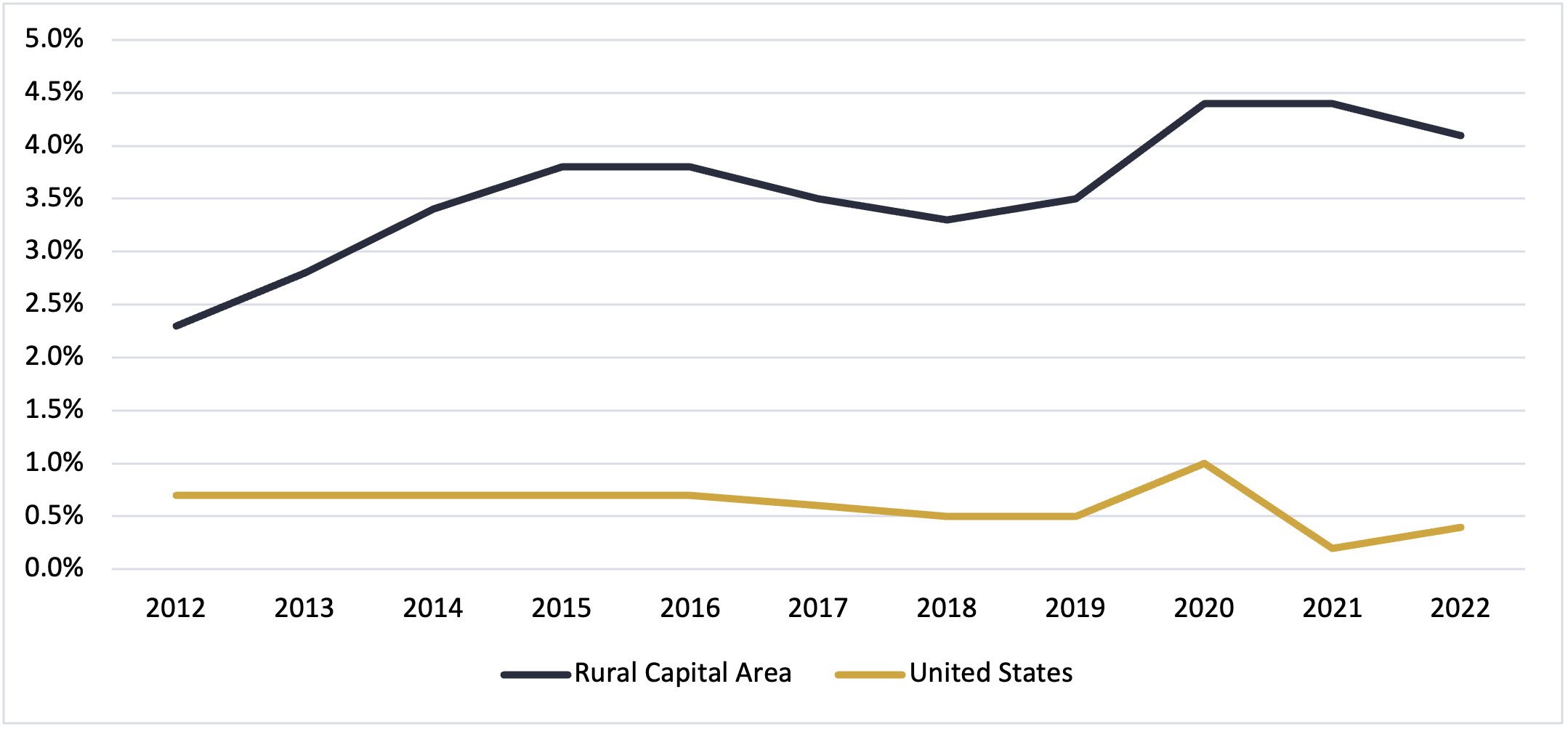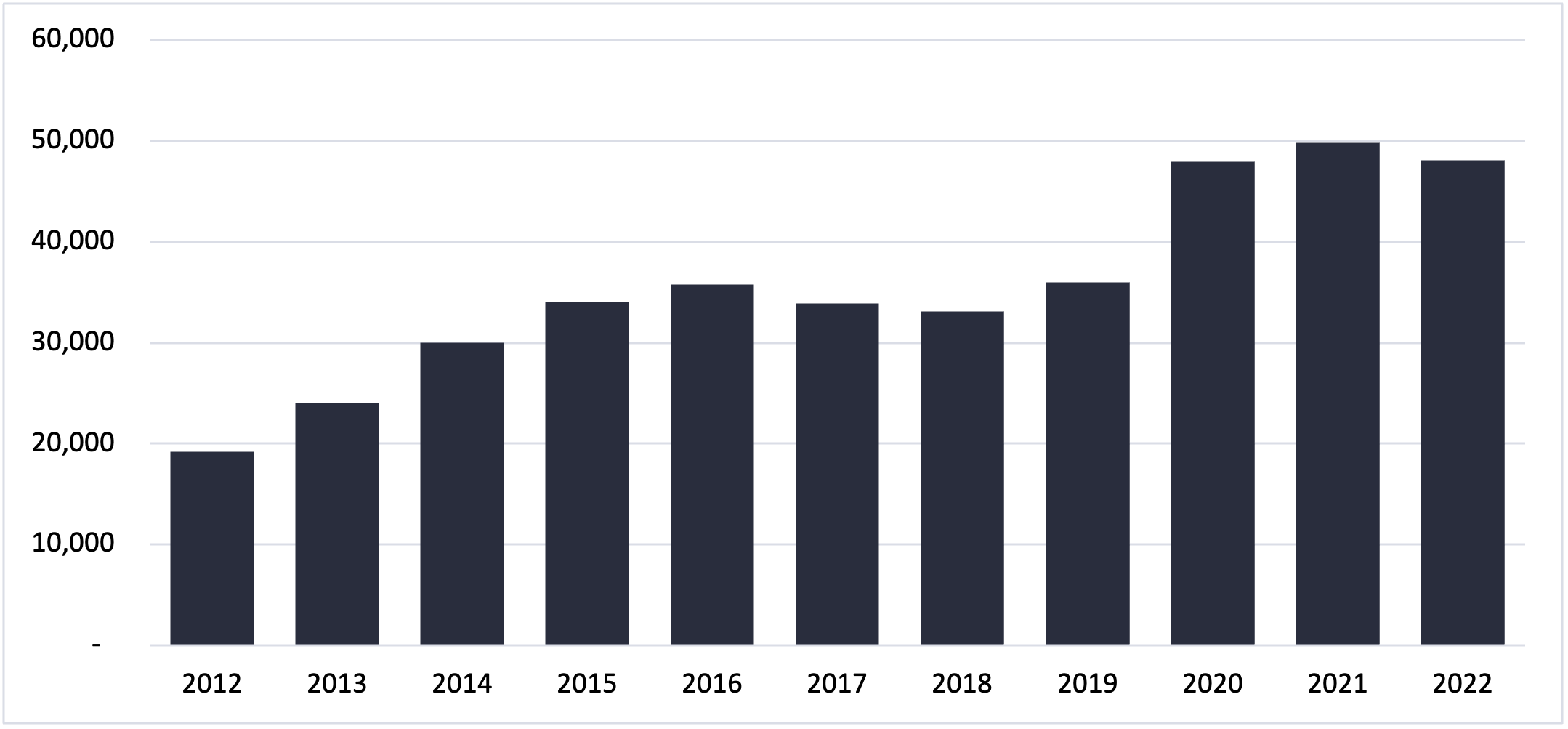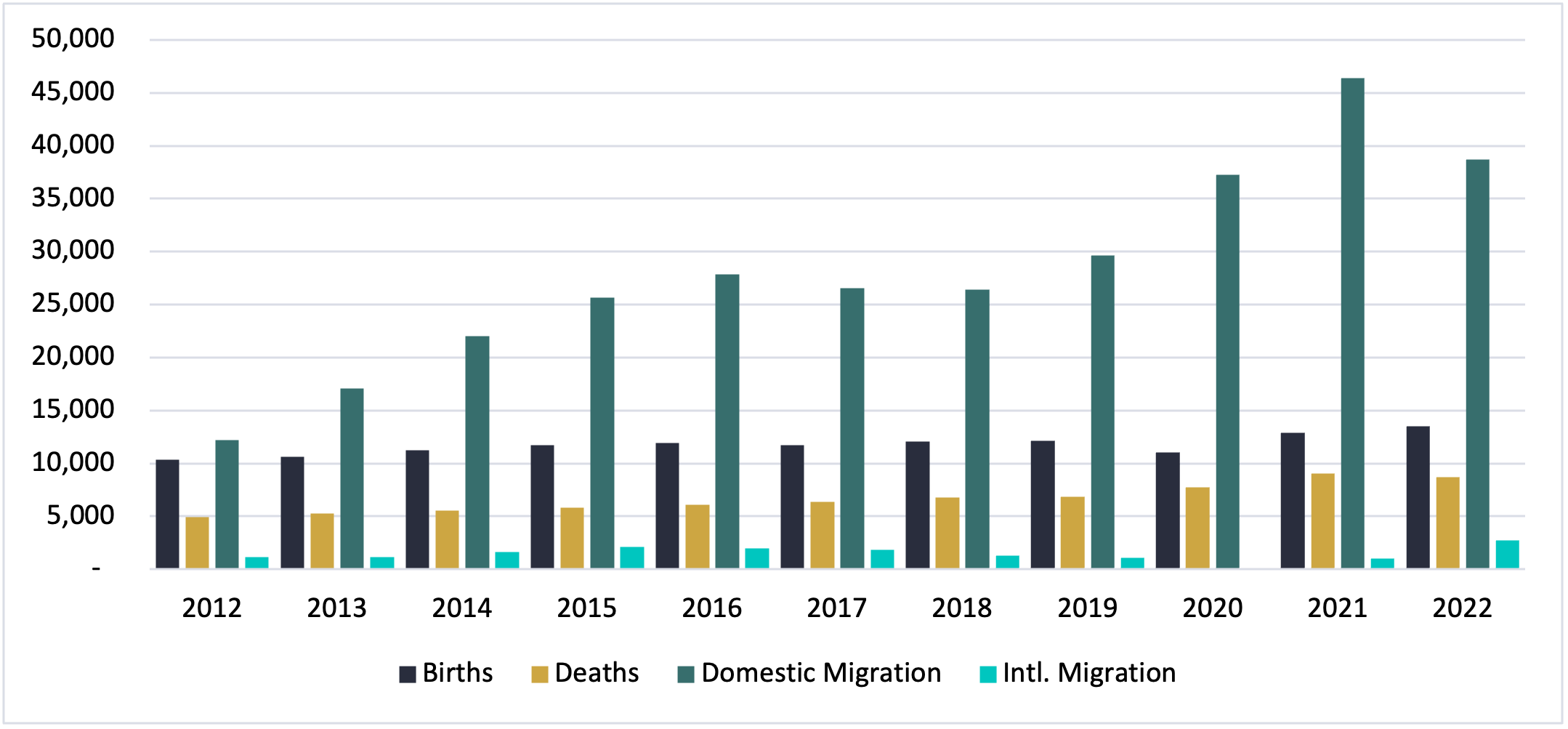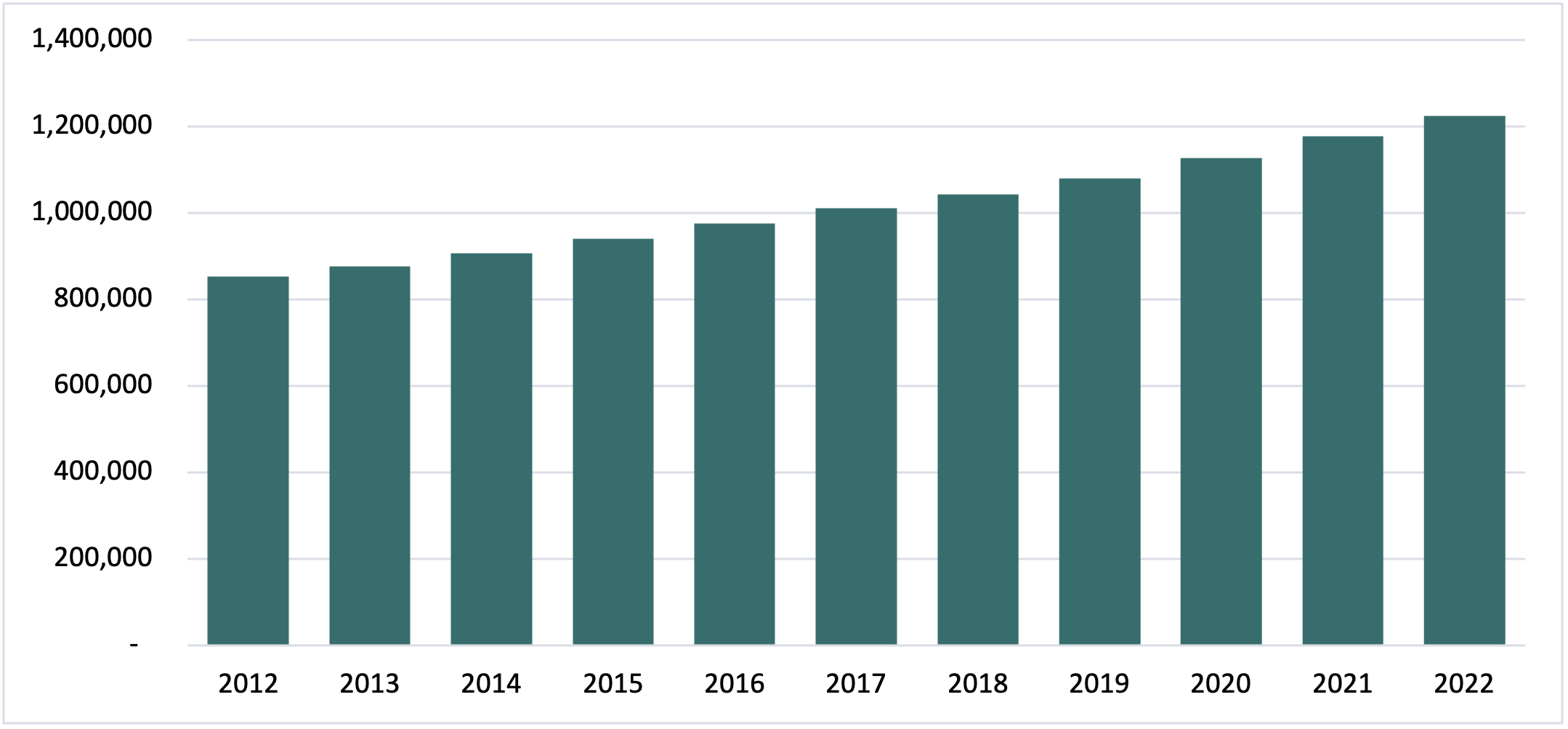The Rural Capital Area (RCA) has grown substantially in population in the past decade. Impressively, the population growth rate in the RCA was on average 3% higher than the US between 2012 and 2022.
Figure 1: Rural Capital Area vs. U.S., Population Growth, 2012-2022

Unsurprisingly, the growth in new persons per year follows the trend of overall population growth. However, Figure 2 serves to highlight RCA’s boom in growth in the past three years. The years 2020-2022 all have significantly more new people per year than the previous years of the decade.
Figure 2: Rural Capital Area, New Persons Per Year, 2012-2022

What is the source of this growth? First, births have always exceeded deaths in the past decade. While this is not the largest source of growth, it has been steady over the past ten years. However, most of the population growth stems from migration into the area, specifically domestic migration. While these data do not separate in and out of state migration, the spike over the pandemic, peaking in 2021, is consistent with migration patterns seen across the nation. In many cities across the US, including Houston, people moved out of the most densely populated areas into suburbs or smaller surrounding cities. Given the proximity of the RCA to Austin, it’s not surprising that the area saw an increase in migration over that time period.
Figure 3: Rural Capital Area, Population Change Components, 2012-2022

All told, the population in the RCA is about 373K greater in 2022 than in 2012, and the growth shows no signs of stopping or slowing down. The increased population will naturally affect housing, employment, job growth, and many other areas of the economy in the future.
Figure 4: Rural Capital Area, Population, 2012-2022
